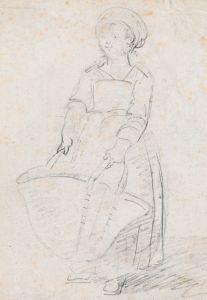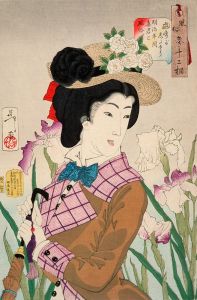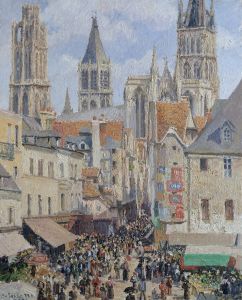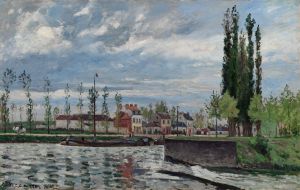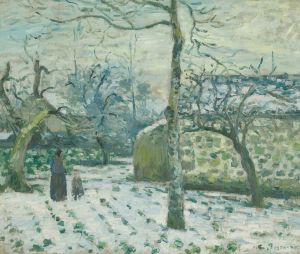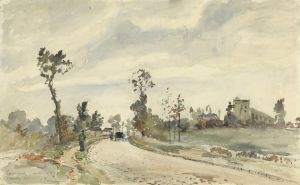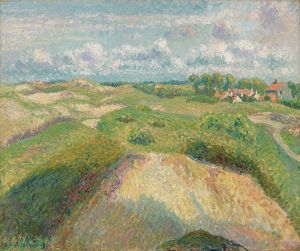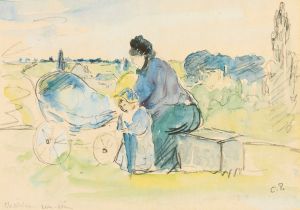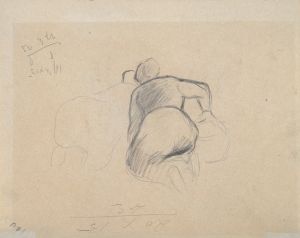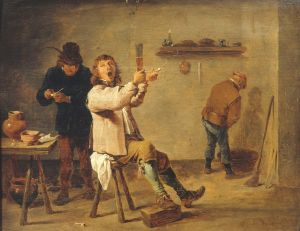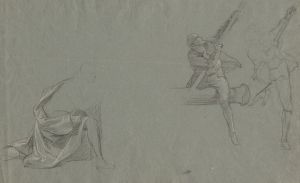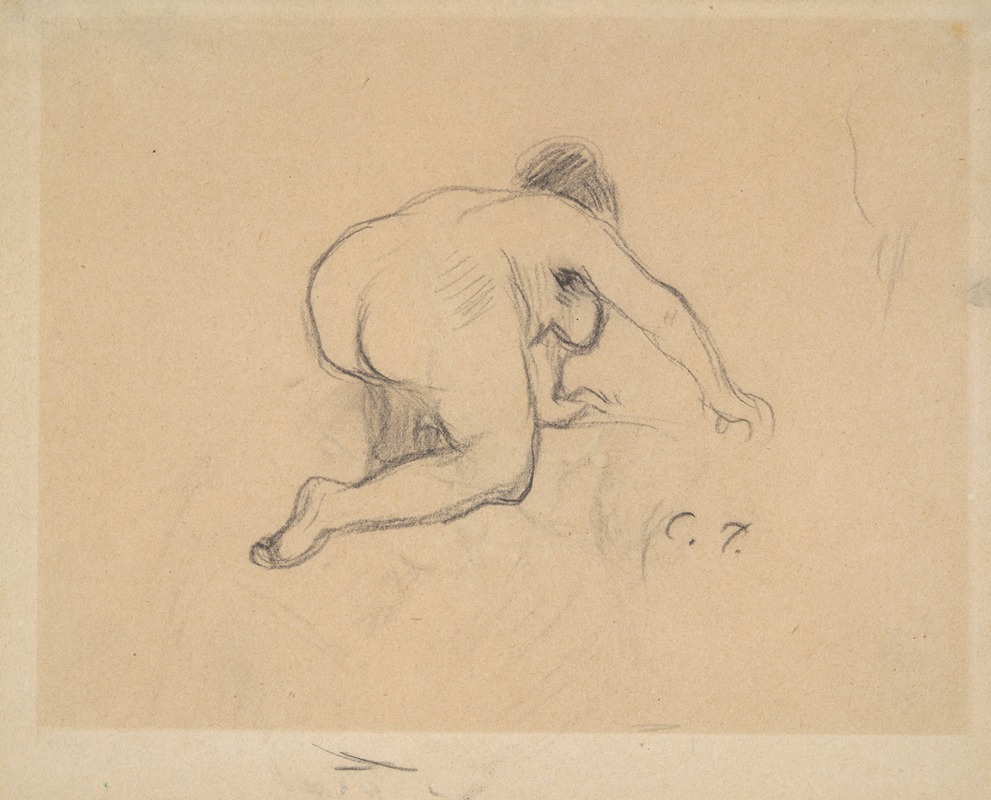
Woman Kneeling
A hand-painted replica of Camille Pissarro’s masterpiece Woman Kneeling, meticulously crafted by professional artists to capture the true essence of the original. Each piece is created with museum-quality canvas and rare mineral pigments, carefully painted by experienced artists with delicate brushstrokes and rich, layered colors to perfectly recreate the texture of the original artwork. Unlike machine-printed reproductions, this hand-painted version brings the painting to life, infused with the artist’s emotions and skill in every stroke. Whether for personal collection or home decoration, it instantly elevates the artistic atmosphere of any space.
"Woman Kneeling" is a painting by the renowned French artist Camille Pissarro, a pivotal figure in the Impressionist movement. Created in 1884, this artwork exemplifies Pissarro's dedication to capturing everyday life and his innovative approach to light and color.
Camille Pissarro was born on July 10, 1830, on the island of St. Thomas in the Danish West Indies (now the U.S. Virgin Islands). He moved to Paris in 1855, where he became a central figure in the Impressionist movement, known for his landscapes and depictions of rural life. Pissarro's work is characterized by his interest in naturalism and his commitment to portraying the lives of ordinary people.
"Woman Kneeling" depicts a woman engaged in a humble, everyday activity, possibly working in a field or garden. The painting is notable for its loose brushwork and the use of light to create a sense of immediacy and presence. Pissarro's technique involves short, quick strokes of color that blend together when viewed from a distance, a hallmark of the Impressionist style.
The subject of the painting, a kneeling woman, is rendered with a sense of dignity and respect. Pissarro often chose to depict peasants and laborers, reflecting his socialist beliefs and his interest in the lives of the working class. This focus on ordinary people was a departure from the more traditional subjects of historical and mythological scenes that dominated the art world at the time.
The composition of "Woman Kneeling" is simple yet effective. The woman is placed slightly off-center, creating a dynamic balance within the frame. The background is rendered in soft, muted tones, allowing the figure to stand out. Pissarro's use of color is particularly noteworthy; he employs a palette of earthy browns, greens, and blues to evoke the natural environment and the time of day.
Pissarro's influence on the Impressionist movement cannot be overstated. He was a mentor to many younger artists, including Paul Cézanne and Paul Gauguin, and his willingness to experiment with different techniques and styles helped to push the boundaries of what was considered acceptable in art. "Woman Kneeling" is a testament to his skill and his commitment to capturing the beauty and dignity of everyday life.
The painting is part of a larger body of work that Pissarro created during the 1880s, a period when he was particularly focused on rural scenes and the lives of peasants. This focus was partly influenced by his move to the village of Eragny-sur-Epte in 1884, where he lived for the rest of his life. The rural setting provided him with ample opportunities to observe and depict the daily activities of the local people.
"Woman Kneeling" is housed in a private collection, and as such, it is not as widely known as some of Pissarro's other works. However, it remains an important example of his mature style and his dedication to the principles of Impressionism. Through this painting, Pissarro invites viewers to appreciate the quiet dignity of everyday life and the beauty that can be found in simple, unassuming moments.





